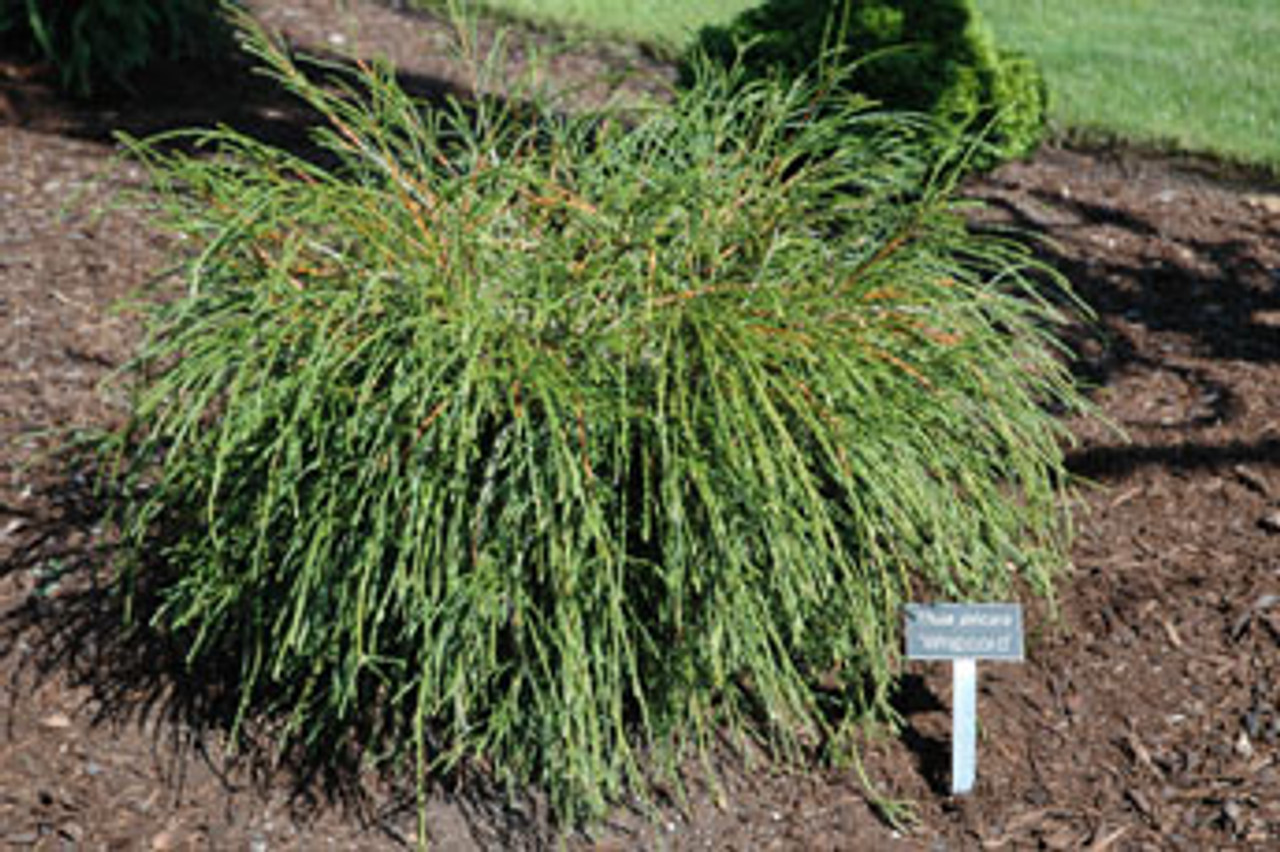
Thuja plicata 'Whipcord' Dwarf Cord Branched Western Red Cedar Kigi Nursery
63 9. 'Whipcord' arborvitae ( Thuja plicata 'Whipcord') is a cool, quirky dwarf conifer that has been on my wishlist for quite some time. Instead of the usual flattened sprays of foliage, this lovable mutant form of our native western arborvitae, or western red cedar, sports a mop top of long, skinny, green rat tails.
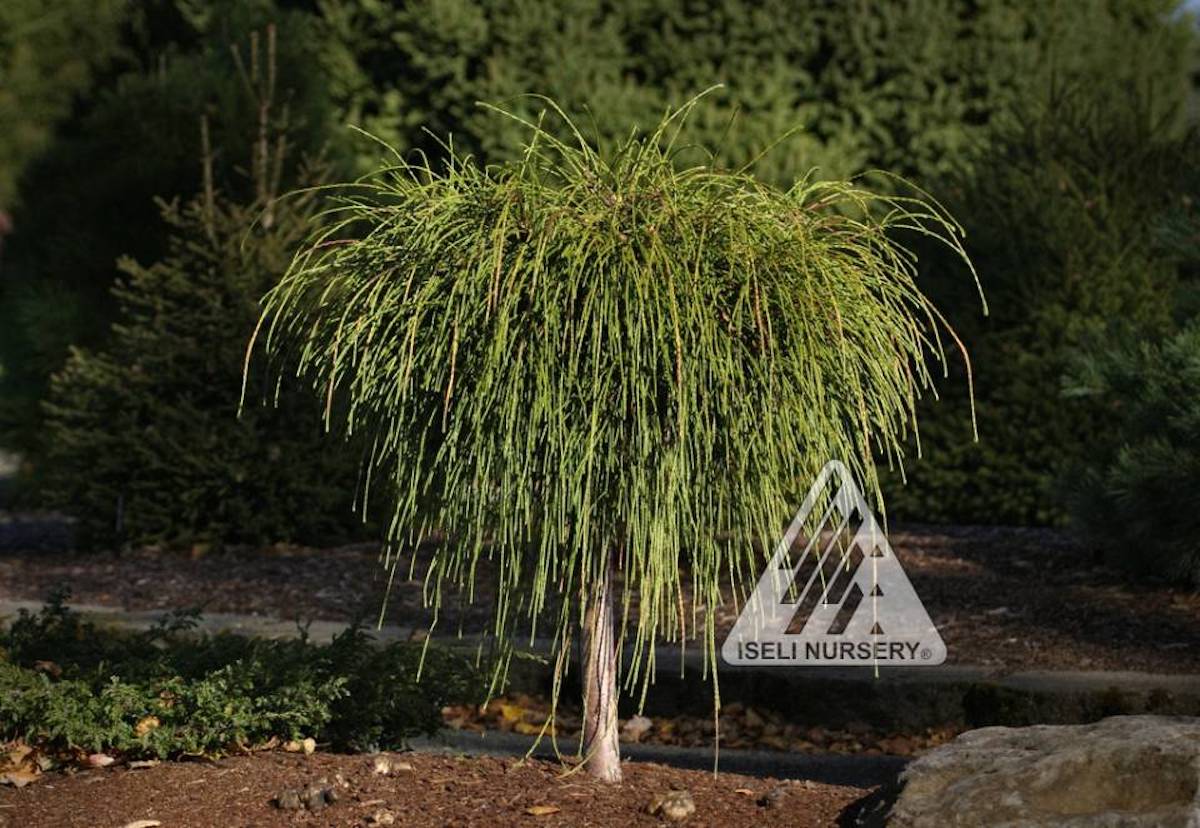
Thuja plicata ‘Whipcord’ Standard Hickory Hollow Nursery and Garden Center
Thuja plicata and Thuja plicata 'Atrovirens' have moderately fast growth of 45-60cm a year. Regular trimming keeps a western red cedar hedge compact, restricting growth to as little as 1.5-2m high.. Thuja plicata 'Whipcord' - unusual both in leaf type and overall shape, the foliage has a 'braided' appearance, green in summer.

The Whipcord Western Red Cedar (Thuja Plicata ‘Whipcord’) Care Guide BigBoyPlants
Whipcord Western Red Cedar, A dense, multi-stemmed evergreen shrub with finely textured, green foliage and gracefully arching branches. Foliage turns bronze in. The species Thuja plicata is a magnificent cedar, much revered by the northwest Native peoples. Such was their respect and dependence on this tree that it was called "tree of life."

Thuja plicata 'Whipcord' Western Red Cedar Conifer Kingdom
Whipcord Western Red Cedar is low, mounding conifer. Has thin green branches radiate in all directions. Shop Online from Conifer Kingdom.. Thuja plicata 'Whipcord' Plant Size #1 Container, #3 Container, BP. Common name: Whipcord Western Red Cedar. Sun Exposure: Sun/Part Shade/Shade. ANNUAL GROWTH: 2-4" HxW@10 Years: 2.5'x2.5' COLOR:
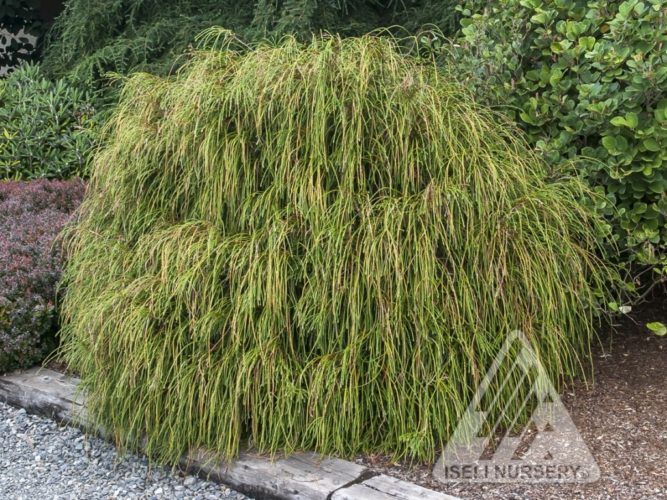
Thuja plicata 'Whipcord' / Whipcord western redcedar Conifer Trinomial American Conifer Society
Sheltered. Plant match details will appear here. 'Whipcord' is a compact, slow-growing, mound-forming to rounded, evergreen coniferous shrub with pendent, whipcord-like branches bearing tiny, scale-like, dark green leaves that are pressed against the stems. Leaves are often bronze-tinted in winter.

Thuja plicata 'Whipcord' Herman Geers
Whipcord Arborvitae is a dwarf conifer which is primarily valued in the landscape or garden for its cascading habit of growth. It has rich green evergreen foliage. The scale-like sprays of foliage turn an outstanding coppery-bronze in the fall, which persists throughout the winter. Whipcord Arborvitae is a dense multi-stemmed evergreen shrub.
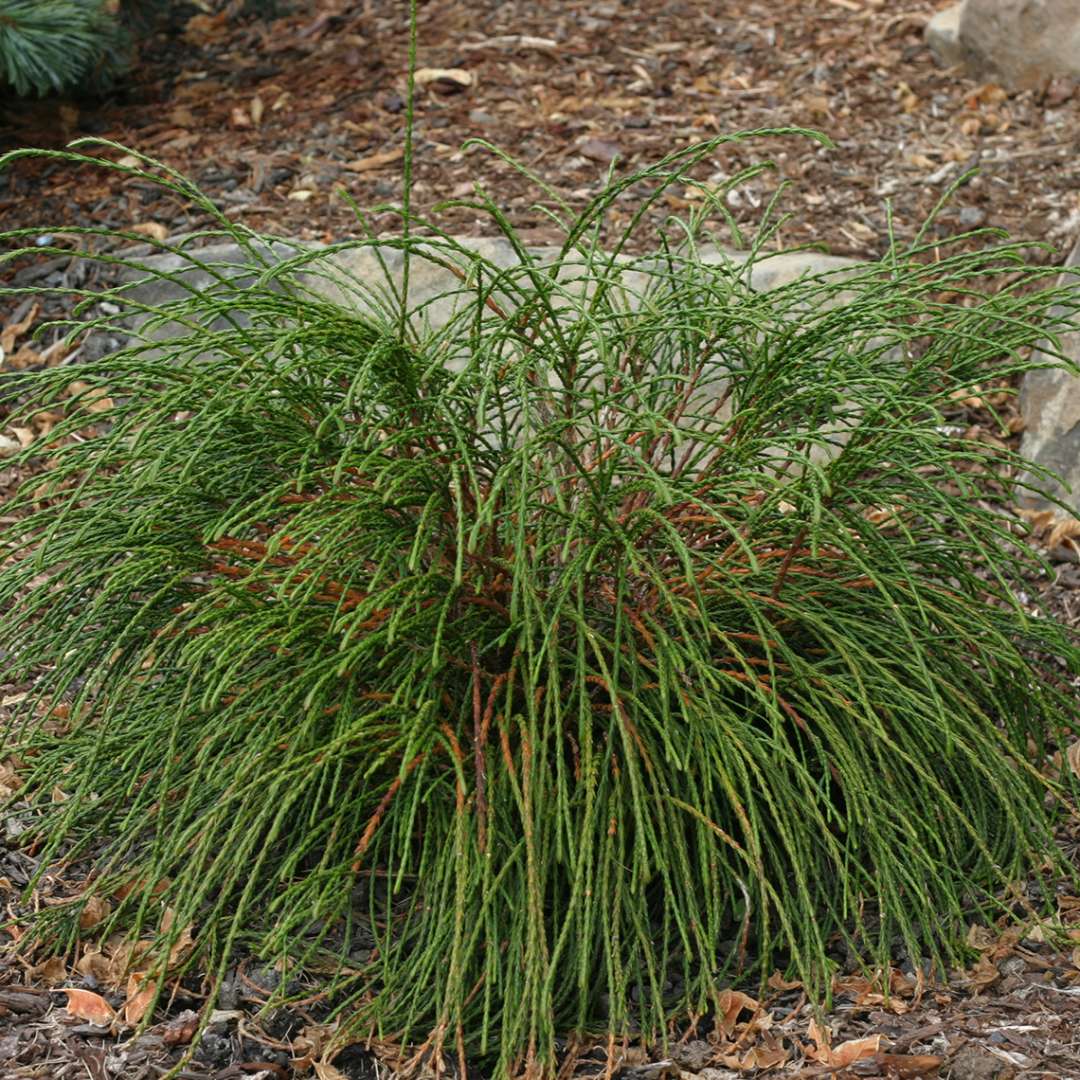
Whipcord Thuja Spring Meadow wholesale liners Spring Meadow Nursery
Thuja plicata 'Whipcord' is a slow growing evergreen conifer shrub with green foliage. It can grow 4 FT - 5 FT - wide, 4 FT - 5 FT - tall. It contributes grassy texture to the garden. Deer and rabbit resistant. To grow well, it prefers sun - mostly shade and even moisture - regular water. Grows best in well-drained, rich and average soil.

Whipcord Arborvitae (Thuja plicata 'Whipcord') in Issaquah Seattle Bellevue Redmond Renton
Whipcord Western Red Cedar (Thuja plicata 'Whipcord'): Long, thick, glossy, arching branches seem to explode from the center of this cultivar of the western red cedar that one nursery described as "mop headed." Deep green leaves during the growing season take on a bronze-ish cast in winter. This plant is somewhat deer resistant. It grows to 5 feet in height and 4 feet in width at maturity, and.

Thuja plicata 'Whipcord' Thuja plicata, Herbs, Evergreen
The species epithet, plicata, is Latin for "braided" and references the positioning and folding of the leaves relative to one another. Western redcedar will suffer in hot, humid climates but may be able to grow in the North Carolina mountains.
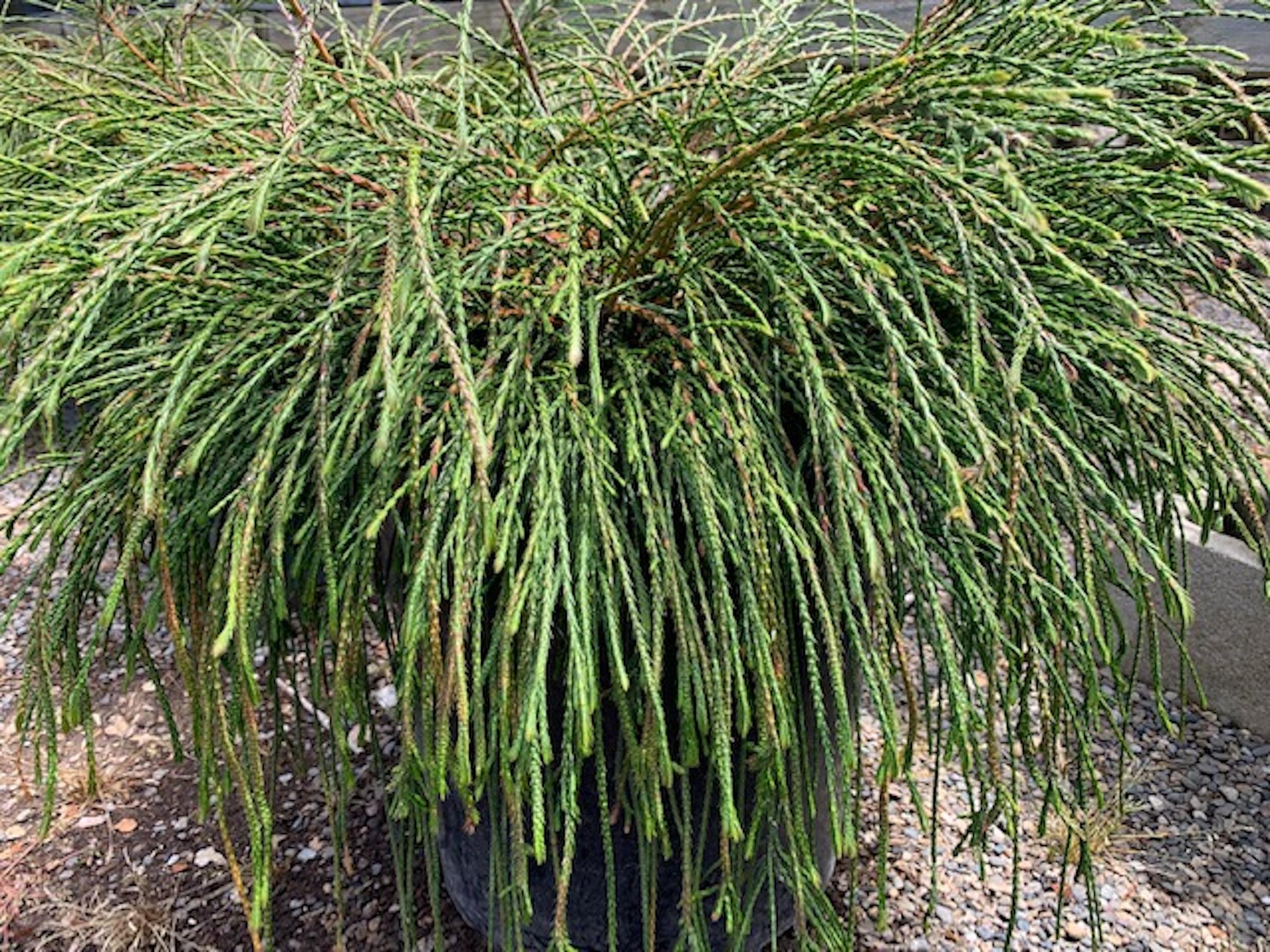
Thuja plicata 'Whipcord' Native Sons Wholesale Nursery
When you first look at Whipcord western red cedars (Thuja plicata 'Whipcord'), you might think you're seeing a variety of ornamental grass.It's hard to imagine Whipcord cedar is a cultivar of the arborvitae.Upon closer inspection, you'll see its scale-like leaves are similar, but Whipcord western red cedar trees lack the conical shape so often associated with other arborvitae varieties.

Thuja plicata 'Whipcord' 1L Coolings Garden Centre
SHRUBS & BUSHES. Sun Shrubs. Whipcord Arborvitae - Thuja plicata 'Whipcord' -1 Gallon Pot. If you're into the quirky and unusual, meet Whipcord, an Arborvitae that looks like no other. Instead of the flat, fan-like sprays of our native western arborvitae, Whipcord sports a hairdo of thin, cord-like branches that resemble a mop of dreadlocks.

Thuja plicata 'Whipcord' (Western Arborvitae) Evergreen, 3 Size Container Amazon.ca Patio
Thuja plicata 'Whipcord' Whipcord Dwarf Western Red Cedar Partial Shade to Full Sun Zone 5-8a 'Whipcord' is a unique small growing conifer with whipcord-like growth that gives an appearance similar to a fancier ornamental grass.
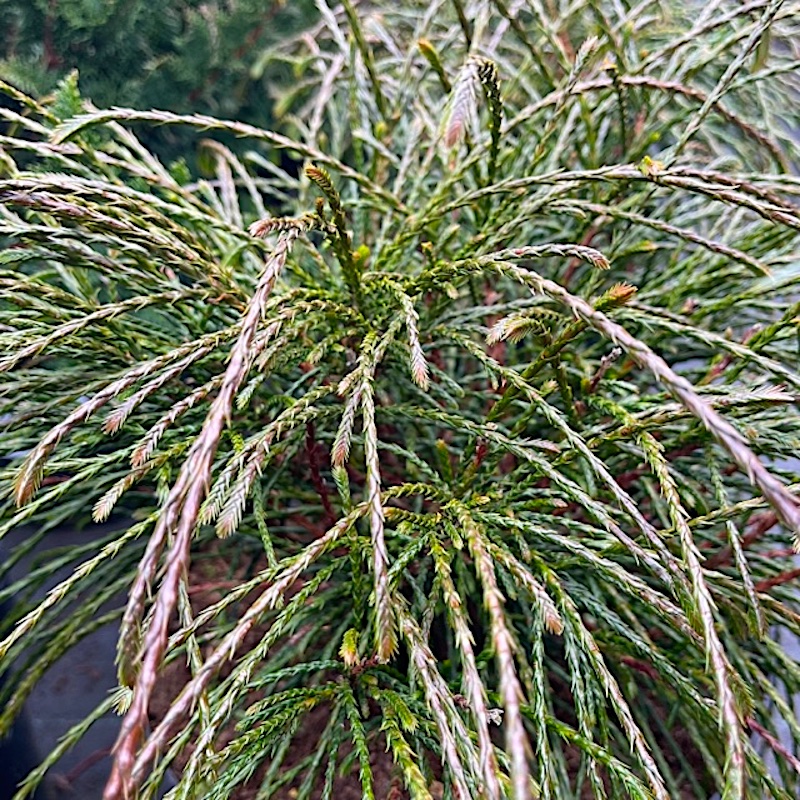
Thuja plicata 'Whipcord' Big Plant Nursery
Thuja plicata is a large evergreen coniferous tree in the family Cupressaceae, native to the Pacific Northwest of North America. Its common name is western redcedar in the U.S.. 'Whipcord' 'Zebrina' Uses In indigenous societies Klallam people and canoe, ca. 1914. Western redcedar is considered the Tree of Life by many of the First Nations of.

Thuja Plicata Whipcord McLarens Nurseries Ltd
Whipcord Red Cedar Standard. Thuja plicata 'Whipcord'. Featuring arching branches with finely textured, rope-like unique evergreen foliage. The green foliage will take on bronze tones during winter, growing 4 to 5 feet tall and wide. Looks wonderful planted in groups or singly as a specimen. USDA Z5 - Cold Hardy -20 to -10F. Category. Conifers.
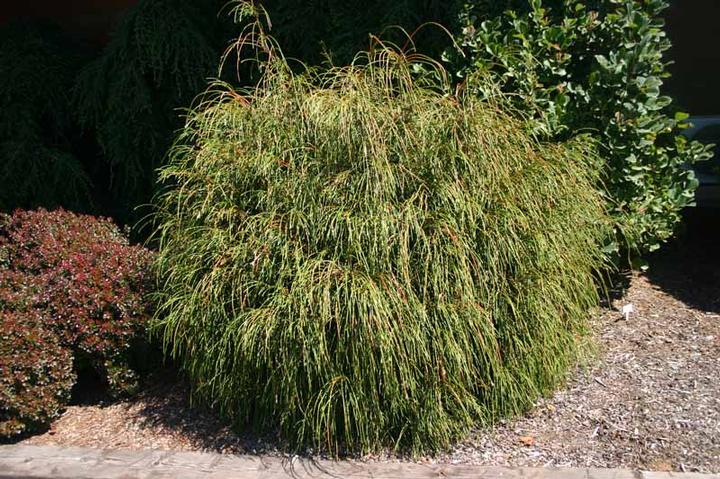
Thuja plicata Whipcord Whipcord Western Red Cedar from Prides Corner Farms
The Whipcord Western Red Cedar or Thuja plicata Whipcord is a part of the arborvitae family, as seen in the scale-like foliage. The center trunk grows 4 to 5 feet tall when mature and is almost entirely concealed by the long, slender branches that gracefully weep or hang down. The weeping branches give the ornamental plant a fountain-like.
Thuja plicata 'Whipcord' The Site Gardener
The Whipcord Western Red Cedar is a native American plant, originating from the Pacific Northwest. Amongst other interesting facts, the Whipcord is a relatively recently discovered cultivar, from a chance seedling in 1986. While actually a cultivar of the arborvitae tree, the Whipcord Western Red Cedar maintains its shrub-like form throughout.